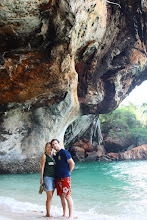outside of the bulguksa temple we met a group of foreign teachers who had been granted a day's leave from their hagwon. we found ourselves united in our struggles to teach in a foreign country, understand korean, appreciate the cuisine, adjust to the differences ... find a bar / restaurant in the ghost town that we were all sleeping in for the night.
chatting about our experiences and travels to date, we realised that although we had much in common with these gents, we were very much better off than they were. our one week of leave blew their minds - as they recounted the rules and regulations that they have to adhere to in their school. the more we spoke (over a meal in a mangy traditional diner) the more acutely aware we became of how fortunate we have been to end up working where we have, with the people we have, in the conditions we have.
it is not all a pretty picture out here. this blog just happens to be coming from the perspective of one very fortunate foreigner.
filled with pity (and relief) with ditched our depressing dinner dates and headed for the imhaejeon site. best viewed at night ... i'm sure you'll agree.
the ponds and gardens of this site were linked together through many separate buildings, which together surrounded the palace of the silla king in 674. they were originally installed along with an artificial hill on which rare flowers and trees were planted, and uncommon birds and animals were raised.
imhaejeon was ued to host royal banquets - and i can't really imagine a more incredible place to do so.

the remaining three palace terraces that have been restored.
an emmaculate small-scale wooden model shows what the entire pleasure garden was thought to have looked like, before it's ruin.
the lotus pond, roughly the shape of the korean peninsula, allowed the king to "view" his entire kingdom, now lit at night to reveal a mirror-image on a crystal clear water surface
on our icy walk back to catch a taxi into the university district (which we later explored by bar-hopping) - we encountered this bottle-shaped stone structure, known as cheomseongdae ("star observation platform"). it is one of the oldest structures in korea, and is also considered the oldest astronomical observatory in all of east asia.
the tower is believed to have been used to trace the paths of stars, predict lunar eclipses and determine weather cycles according to the position of the moon.
the square base is made with 12 large stone slabs - one for each zodiac figure. atop these, granite blocks are stacked, one for each day of the year. including all stones, there is a total of 30 layers, one for each month of the lunar year.

































































No comments:
Post a Comment